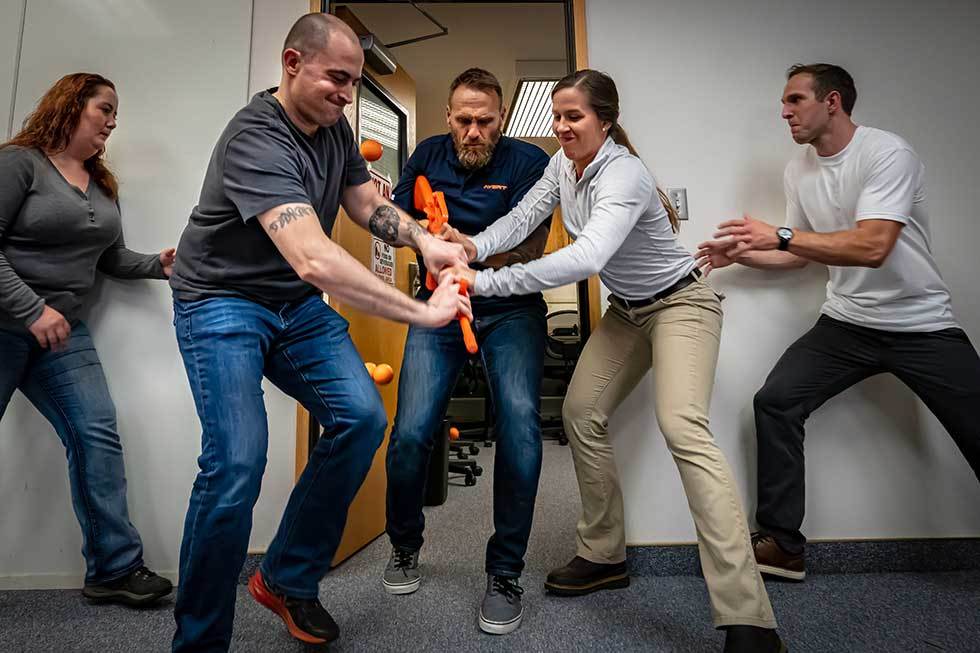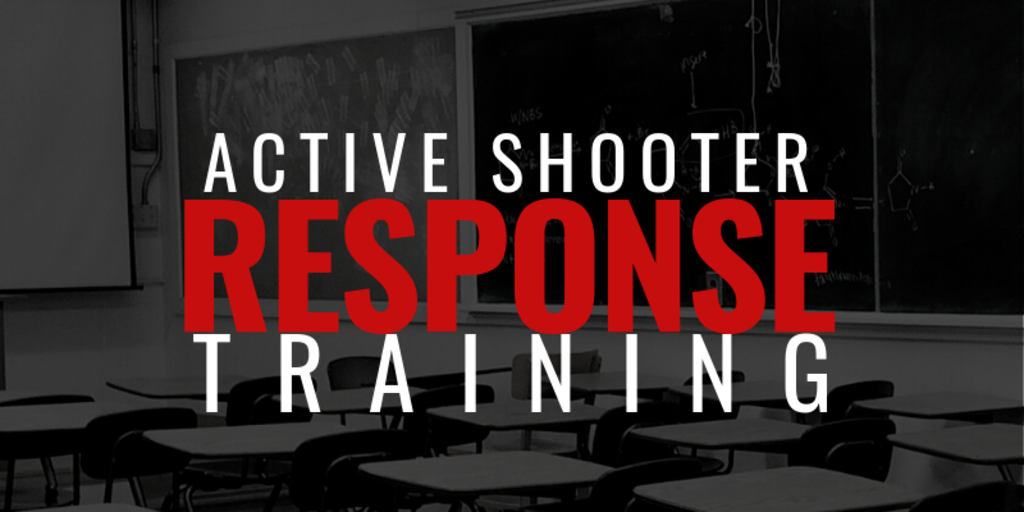What You Need to Find Out About Effective Active Shooter Training
What You Need to Find Out About Effective Active Shooter Training
Blog Article
The Crucial Duty of Energetic Shooter Training in Enhancing Emergency Response Approaches in Numerous Atmospheres
Active shooter training has actually emerged as a basic element in refining emergency situation action techniques throughout varied setups, from educational organizations to business environments. The effectiveness of such training hinges on numerous factors, including the particular context in which it is carried out and the ongoing dedication to renovation.
Importance of Active Shooter Training
In an age marked by boosting problems over public safety, the value of active shooter training can not be overstated. As occurrences of weapon physical violence in public spaces continue to increase, companies across numerous sectorsâEUR" universities, offices, and public venuesâEUR" are identifying the need of preparing their personnel and communities for such emergencies. Active shooter training furnishes people with essential abilities and expertise to react properly in dangerous circumstances, potentially lessening casualties and saving lives.
The training not only focuses on immediate action activities, such as emptying and safeguarding in place, but also cultivates a society of understanding and readiness. By participating in practical simulations and conversations, participants can identify possible susceptabilities within their atmosphere and develop strategies for mitigating dangers. Such training enhances interaction and coordination amongst team participants and initial responders, ensuring a much more unified approach throughout crises.

Trick Components of Effective Educating
Reliable active shooter training makes up a number of essential parts that enhance preparedness and feedback capabilities. Primarily, practical scenario-based simulations are important. These exercises submerse individuals in high-stress situations that imitate prospective energetic shooter occasions, enabling them to exercise decision-making and physical feedbacks under stress.
Additionally, training should include a detailed understanding of interaction protocols. Participants need to be fluent in how to relay vital info to police and fellow people throughout an occurrence. This consists of utilizing emergency notifies and understanding the chain of command.
Another vital element is the consolidation of mental health and wellness understanding. Training must deal with the emotional influence of energetic shooter circumstances, furnishing participants with coping techniques and resources to support their psychological health post-incident.
In addition, normal correspondence course are vital to make certain that abilities stay sharp and understanding is up-to-date. This continuous education and learning strengthens the significance of preparedness and promotes a society of safety and security within organizations.
Training for Various Settings
Energetic shooter training have to be customized to the particular environments in which people operate, as each setting presents one-of-a-kind difficulties and dynamics. For instance, training in a company workplace will certainly differ considerably from that in a school, mall, or health care center. Each environment necessitates a tailored method that considers aspects such as layout, populace thickness, and offered retreat paths.
In schools, training programs ought to stress lockdown procedures, interaction methods with police, and strategies for securing students. Alternatively, in corporate setups, training might focus on emptying approaches, acknowledging dubious behaviors, and making use of readily available resources for protection my link or shelter-in-place circumstances.
Furthermore, public locations like shopping malls or sporting events require considerable group administration methods, with a focus on rapid action control among safety and security personnel and regional regulation enforcement.
In medical care environments, training should attend to particular vulnerabilities, such as the visibility of patients that may call for prompt assistance. By comprehending the unique characteristics of each atmosphere, organizations can establish efficient training components that improve readiness and enhance general security, making sure that people are outfitted to react suitably in diverse crisis situations.

Building a Culture of Awareness
Creating a society of understanding is essential to enhancing safety and security actions in any kind of atmosphere, as it empowers individuals to identify possible hazards and respond proactively. This culture demands constant education, open interaction, and the assimilation of security protocols right into everyday routines.
Organizations ought to prioritize energetic shooter training as component of their overarching safety method, guaranteeing that all employees understand the certain risks related to their setting. Routine training sessions grow watchfulness and knowledge with emergency treatments, urging individuals to stay sharp to unusual habits or conditions.
Furthermore, fostering a culture of recognition entails creating an atmosphere where reporting dubious task is both encouraged and normalized. active shooter training. Workers have to really feel comfy sharing their concerns without concern helpful site of revenge. This can be achieved through clear channels of communication and helpful management
In addition, taking part in area collaborations can heighten awareness beyond organizational limits, promoting a shared obligation for security. Initiatives such as workshops, drills, and informative sessions can additionally improve cumulative caution. Inevitably, constructing a society of recognition not just prepares people for possible crises but also strengthens the total resilience of the company versus hazards.
Evaluating Educating Efficiency
While regular training sessions are crucial for readiness, examining their effectiveness is similarly essential to make sure that personnel are geared up with the necessary skills and expertise to react suitably in case of an active shooter circumstance. Analysis procedures must include both qualitative and quantitative analyses to determine the effect of training on response capacities.
Studies and comments from participants can provide beneficial understandings into the training's importance and applicability. Furthermore, carrying out practical drills and simulations allows companies to observe real-time decision-making and synergy under pressure. Analyzing the end results of these exercises aids determine strengths and locations for improvement.

Entailing stakeholders, consisting of law enforcement and emergency responders, in the evaluation process can improve reputation and provide an extensive point of view on training efficiency (active shooter training). Ultimately, a methodical analysis approach ensures that active shooter training remains a vital component of an organization's emergency reaction technique, cultivating a safer environment for all
Conclusion
Active shooter training is important in fortifying emergency reaction techniques across diverse environments. By furnishing people with the needed abilities and understanding, such training improves preparedness and coordination during critical incidents. Customized strategies for various settings ensure that specific vulnerabilities are addressed, cultivating a society of recognition and constant education. Ultimately, the execution and evaluation of effective training programs add substantially to minimizing the effect of active shooter situations, therefore guarding lives and improving neighborhood durability.
Report this page